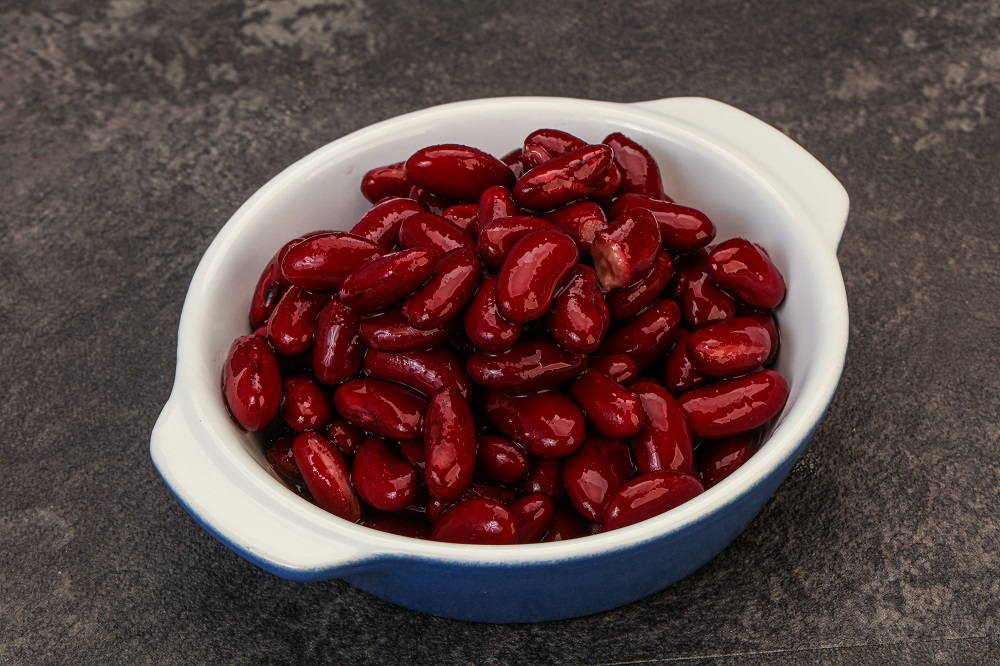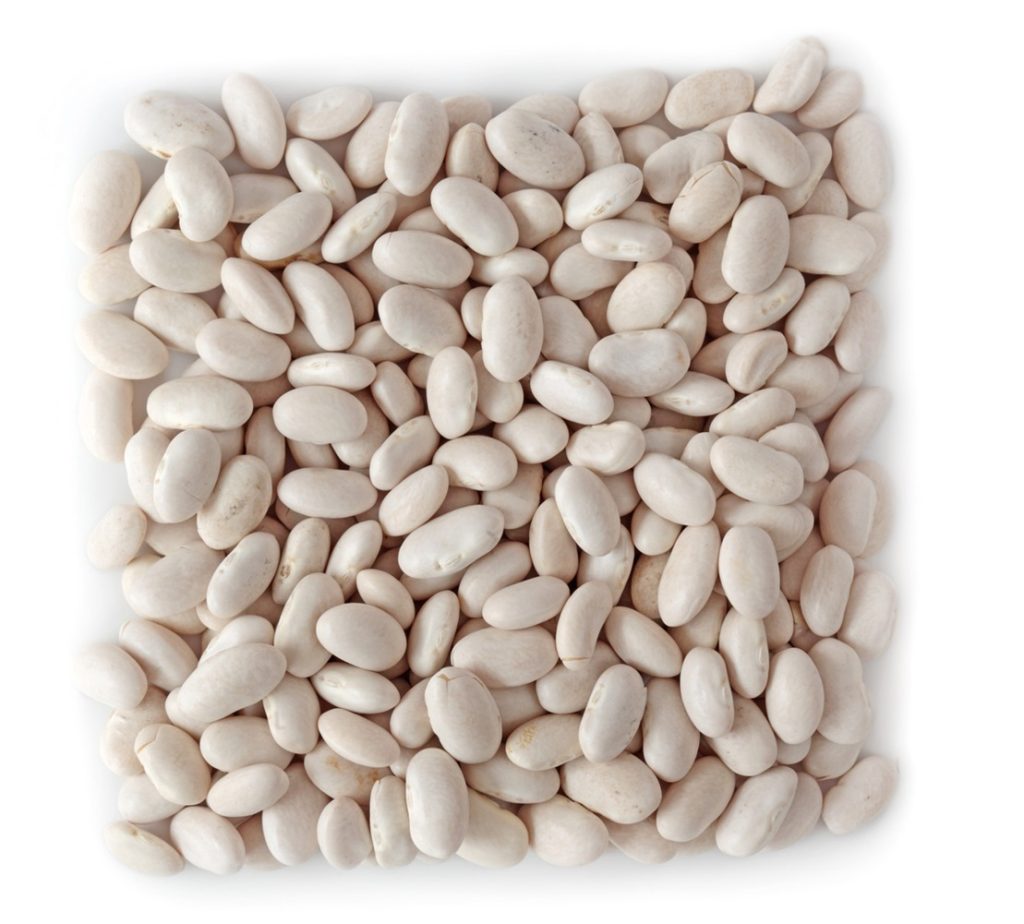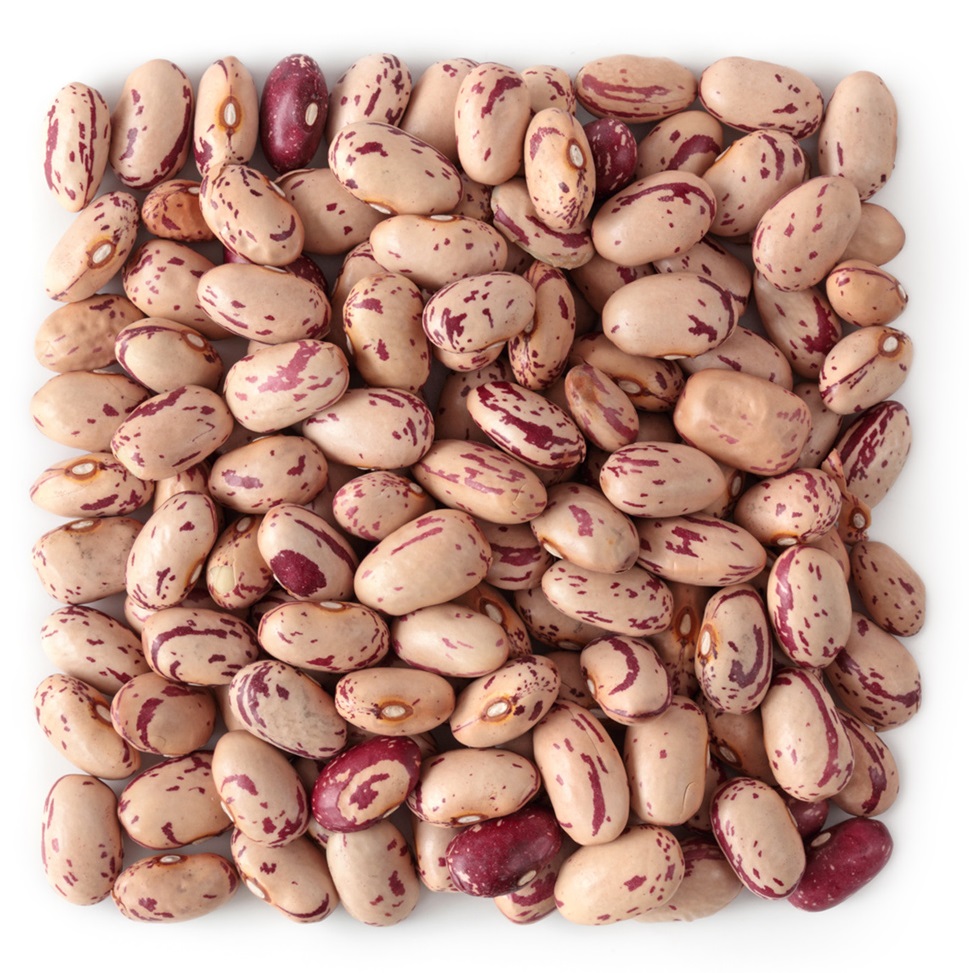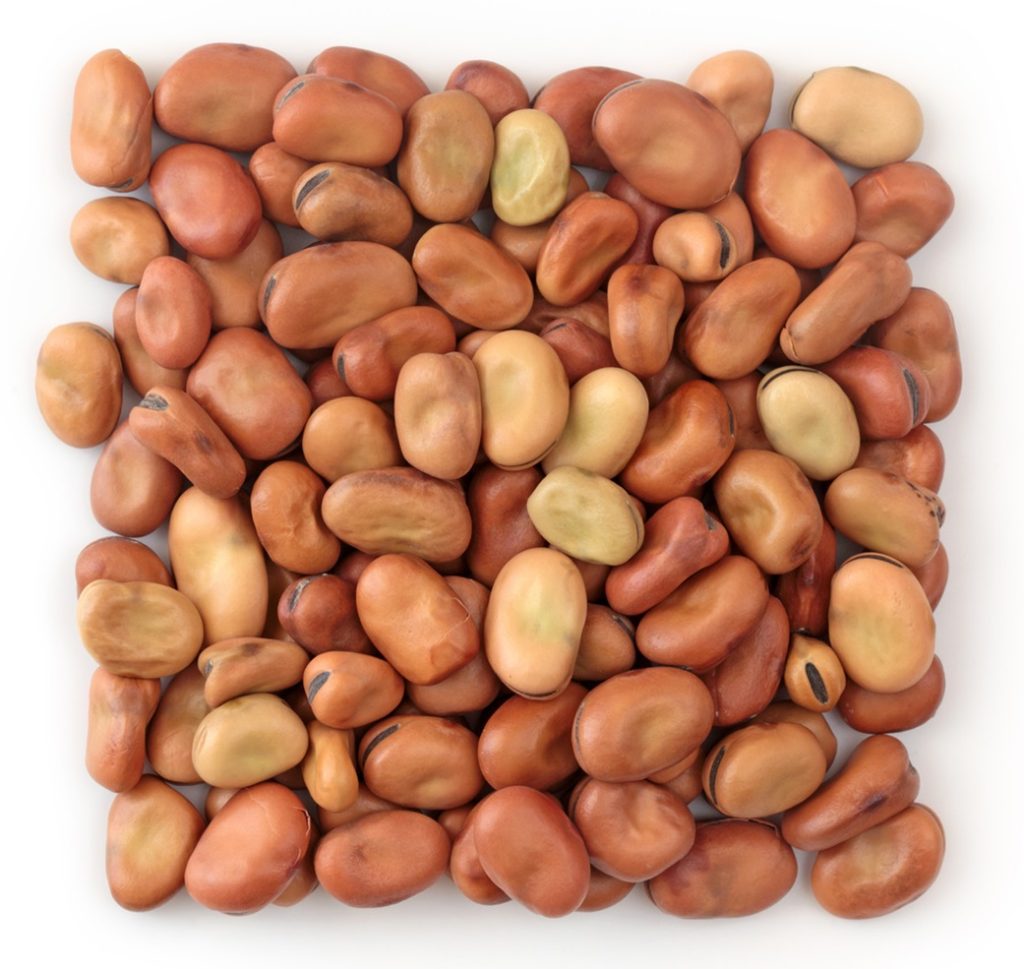Traditional chili often incorporates some sort of beans into its ingredient list, both to add significant volume and to bolster the relatively savory flavor profile of the dish.
The particular type of beans preferred both by modern recipes and tradition is that of the kidney bean, of which is often boiled or stewed in some way prior to its incorporation into chili alongside the addition of other ingredients like tomatoes, meat and various seasonings.
The best bean substitutes for chili are navy beans, pinto beans, and fava beans. The best animal/protein substitutes for beans in chili are shredded chicken, ground pork, and ground beef. The best vegan substitutes for beans in chili are chickpeas, pressed tofu, and mushrooms.
Reasons to Substitute Beans in Chili
A variety of reasons may exist behind the need to substitute kidney beans in chili, with such things like dietary restrictions, a lack of availability, insufficient preparation time or even the eating preferences of the individual all being perfectly valid motivations behind the substitution of kidney beans.

Even in cases where one simply desires to try alternative ingredients in chili with no other pressing motivations, several other ingredients can act as excellent variations, each adding a unique twist to the hearty Mexican dish.
What Purpose do Beans Serve in Chili?
Beans are considered optional in the ingredient list of chili, wherein they may be added or ignored depending on the preferences of the cook and the traditions of the local geographical region.
However, in instances where beans are indeed added to chili, it is usually for the purposes of increasing its solid mass, improving its protein content or to impart a mildly earthy flavor to the otherwise acidic and savory taste profile of most chilis.
The presence of beans in chili is considered controversial owing to the fact that opposing sides of the argument believe that beans are not normally added to traditional chili recipes, as well as the fact that it may not mesh well with chili’s particular flavor or textural experience, depending on individual preferences.
There is no doubt, though, that in cases where beans must be substituted in chili, several other ingredients may act as improvements to the base dish, whether in flavor, nutrition or texture.
Are There Healthier Alternatives to Beans in Chili?
Though beans themselves are known to be quite healthy in terms of nutritional and digestive benefits, several other substitutes may be just as beneficial to the consumer, if not more.
The primary positive health effect imparted by beans in a meal is a net increase of most types of vitamin B, as well as digestible fiber that aids in gastric function.
These two factors may be replicated easily, with many vegetables or vegan bean alternatives being considerably higher in fiber content, and with many types of meat or other proteins possessing higher volumes of vitamin B per unit of mass.
Types of Substitute Beans for Chili
In situations where it is only the specific type of kidney beans itself that must be substituted, an excellent way to retain the same earthy taste and bean-like texture is to simply alternate kidney beans with another form of bean possessing similar characteristics.
Also called the pea bean or white pea bean, the navy bean is similar to kidney beans in terms of relative size and nutritional value, though navy beans are distinctly smaller in total mass, of which is usually made up for by being cooked or purchased in large batches.

Navy beans are an excellent substitute to kidney beans in chili owing to the similarity in their flavor and texture, depending on the nature of the cooking method used.
It is important to note however that the consistency of the chili may be altered somewhat owing to the larger amount yet smaller size of the navy beans, creating a somewhat “grainier” texture, though unnoticeable in single bites.
Pinto Beans
The very same type of bean also used to make refried beans in other forms of Mexican cuisine, pinto beans are yet another excellent alternative bean substitute to kidney beans in chili, owing to the similarity in their size and nutrition.

In fact, it is occasionally said that pinto beans may actually be a better bean to add to chili than the kidney bean itself.
This is likely due to the distinctly earthier and more creamy texture of pinto beans, of which meshes quite well with most of the spices normally incorporated into the majority of chili recipes.
Fava Beans
A healthier alternative to kidney beans, fava beans present much the same nutritional, mineral and fiber content as kidney beans do, though with the added benefit of a somewhat lower caloric value per unit of volume.

However, the relative flavor of fava beans, though mild, is considered somewhat unsuitable in certain chili recipes owing to its distinctly buttery and slightly sweet flavor, of which is often accompanied by a silky and somewhat creamy texture, especially when left to stew in the acidic chili mixture for some period of time under heat.
As such, it is best to use fava beans alongside another type of chili bean substitute so as to get the best of both worlds, nutrition and flavor-wise.
Animal Meat/Protein Substitutes for Beans in Chili
If the chef has instead chosen to forego the usage of beans entirely in their chili recipe, it is entirely possible to replace the particular ingredient with certain other types of meat that may replicate their savory flavor or texture.
It is important to keep in mind that these alternative meat ingredients do not present the same nutritional profile as kidney beans themselves, though this does not mean that the meat substitute itself does not possess its own health benefits.
Shredded Chicken
Though different in flavor and appearance, shredded chicken in the correct volume and cut can act as a volume replacement to kidney beans in chili.
This allows one to bulk up the relative mass and density of the chili without the usage of any significantly flavor altering ingredients that may ruin the recipe itself.
The primary drawback to doing so, however, is the fact that shredded chicken imparts its own savory flavor, which is considered quite distinct from the slightly sweet and earthy tastes imparted by red kidney beans in chili.
In terms of texture, however, shredded chicken cooked in the correct manner can replicate the same meaty and ever so slightly giving fleshiness of kidney beans, allowing the shredded chicken to act both as a mass improving ingredient and as a textural substitute.
Ground Pork
The closest possible meat product approximation to kidney beans, ground pork shares the same somewhat sweet yet savory flavor profile that is normally characteristic to kidney beans.
These particular notes of flavor mesh quite well with the usual slightly acidic and aromatic flavors found in chili recipes, allowing ground pork to not impart significant volume to the dish but to also eclipse kidney beans in terms of taste, potentially improving the entire meal beyond what kidney beans could achieve.
It is important to utilize ground pork that is relatively lower in fat content, however, as grease may pool along the surface of the chili if the ground pork is not drained beforehand.
Ground Beef
Quite similar to ground pork in terms of volume bulking and texture, the primary difference when substituting kidney beans in chili with ground beef instead of ground pork is the distinctly less sweet taste it will impart into the dish.
This may be of use in meals served to individuals with a particular preference for more savory chili, especially in chili recipes that already possess some level of sweetness, whether from a particular species of pepper incorporated into the chili or through other means.
Unlike the use of ground pork or shredded chicken, however, most forms of lean ground beef are not composed of enough fatty tissues to significantly alter the texture or flavor of the chili, making it perhaps the most convenient meat alternative to beans in chili.
Vegan Substitutes for Beans in Chili
Though meat is a traditional principle ingredient in chili recipes, there are several forms of chili that are considered vegan or vegetarian, allowing it to be consumed by individuals with this sort of ethical standing or dietary requirement.
In instances where kidney beans are otherwise not available for use in these particular recipes, certain other alternative vegetables or vegetable products may instead be used, most of which provide similar levels of volume bulking, savory flavors or textural improvements to the dish.
Chickpeas
Somewhat healthier in a few capacities than kidney beans themselves, chickpeas present similar levels of protein and fiber to the traditional kidney bean, making them an excellent nutritional substitute in chili.

This is all the more so a suitable substitution in situations where little time is available in order to prepare the chili, with chickpeas in their canned or similar form being immediately ready for cooking without the need for soaking or boiling, unlike the vast majority of beans themselves.
A primary benefit to utilizing chickpeas as a bean replacement in chili is their similarity in texture and size, making the otherwise small difference in flavor rather unnoticeable to the majority of palates.
Pressed Tofu
While tofu is considered the catch-all replication ingredient for recipes that require some level of vegan or vegetarian protein substitution, it is only pressed or solidified tofu that may act as a bean substitute in chili.
This is due to the fact that, if prepared and treated properly, pressed tofu can replicate the size, texture and volume of kidney beans in chili, with the primary drawback to doing so being the time required in order to press the tofu into the desired firmness prior to cutting it into suitably smaller pieces.
The caveat of tofu’s time consuming preparation may be remedied somewhat by purchasing tofu that has already been firmed up somewhat prior to beginning the cooking process of chili, thereby requiring that the block only be cut up into bean sized pieces instead.
Mushrooms
Occasionally similar in flavor, mushrooms can also act as an excellent substitute to beans in chili owing to the fact that most kinds of culinary mushrooms present a similar slightly sweet yet earthy taste profile, much like the sort of flavor notes found in kidney beans themselves.
A drawback to utilizing mushrooms as a bean substitute in chili is the primary difference in their texture, with uncooked mushrooms possessing a rubbery and slightly soft texture and cooked mushrooms developing a mealy or meaty consistency, both of which are distinct from the creamy and soft texture presented by beans.
References
1. Al Fischer, Mildred Fischre. (1984) “Chili-lovers’ Cook Book: Chili Recipes and Recipes with Chiles Cookbooks and Restaurant Guide” Golden West Publishers, the university of California. Retrieved through Google books General Cooking section ISBN 091484606X, 9780914846062
2. Robin Robertson. (1998) “The Vegetarian Chili Cookbook: 80 Deliciously Different One-Dish Meals” Harvard Common Press Retrieved through Google Books Vegetables Section ISBN 1558321470, 9781558321472
3. Julie Van Rosendaal, Sue Duncan. (2011) “Spilling the Beans: Cooking and Baking with Beans and Grains Every Day” Whitecap Books ISBN 1770500413, 9781770500419
4. Mullins AP, Arjmandi BH. Health Benefits of Plant-Based Nutrition: Focus on Beans. Nutrients. 2021;13(2):519. Published 2021 Feb 5. doi:10.3390/nu13020519





Hi, I'm Dom
Dom Eats was started to help other people fall in love with food. While cooking can feel intimidating, it doesn't have to be.